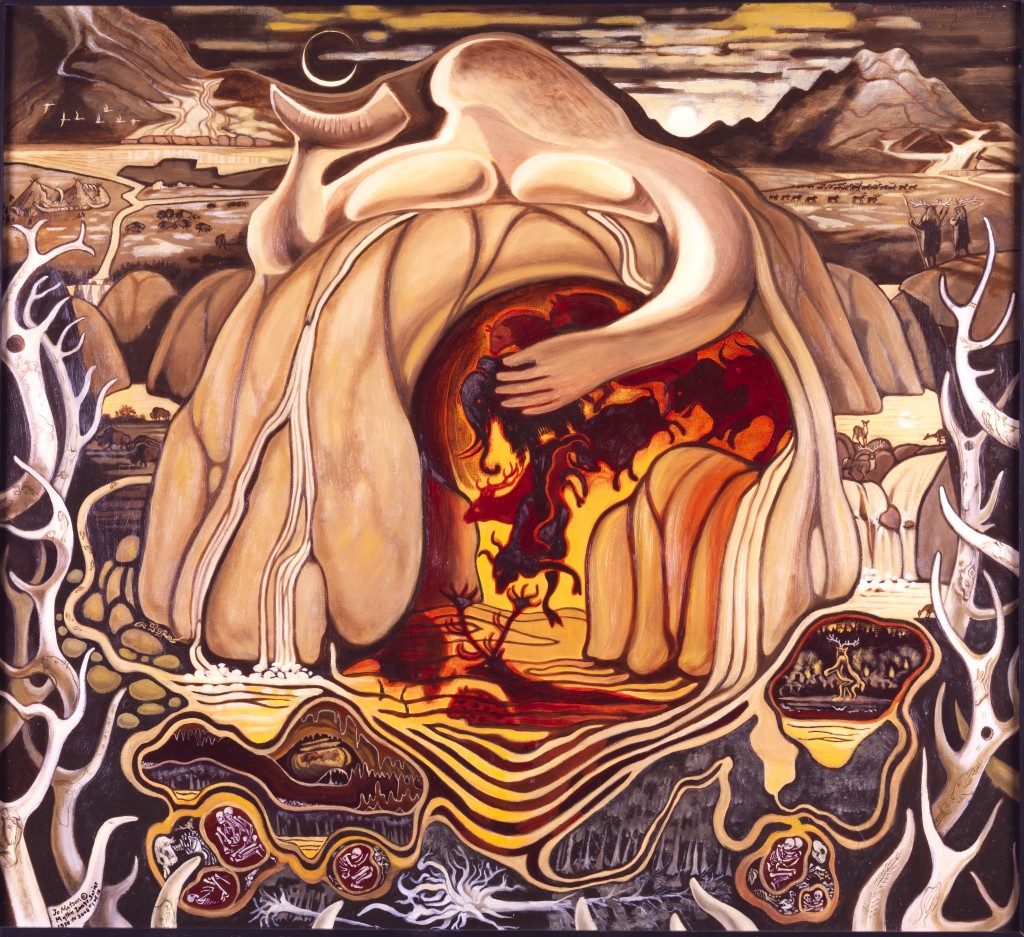The central figure is based on a figurine from Laussel dating back about 20,000 years and found in the Dordogne region of France. She holds an animal horn with a series of vertical lines on it, which some scholars have connected with an early calendar, possibly counting full moons. The moon is therefore shown just above the horn, to reinforce this connection. The figure has been transformed into a mountain, with a cave (her reproductive organs) inside. Inside the cave are the animals known from the cave paintings in Lascaux, also in the Dordogne. Below the central cave are a number of smaller ones, containing burials, underground water, and a ritual being performed by a shaman. The shaman is based on a figure from the nearby Trois Frères cave, although from a somewhat later date, c. 13,000 BC. The border is made of spear throwers made of antlers, echoing the cyclical nature of this vision of life. The antlers/horns, symbols of the mother/moon and of the food itself, are also the instruments for hunting down the horned beasts.
Jo Matsen: Mythic Images
The Mother in the Mountain

